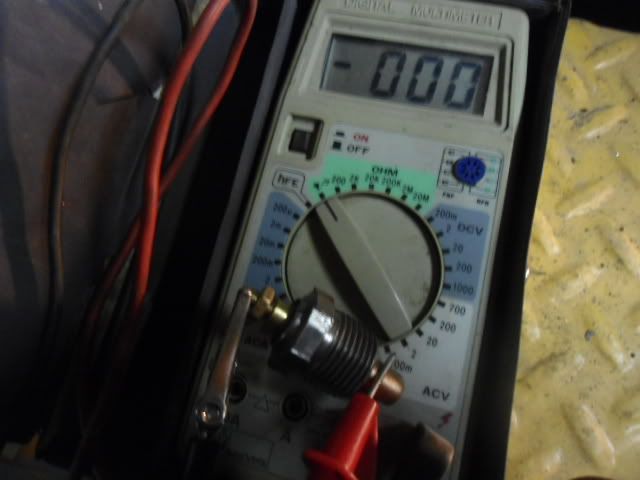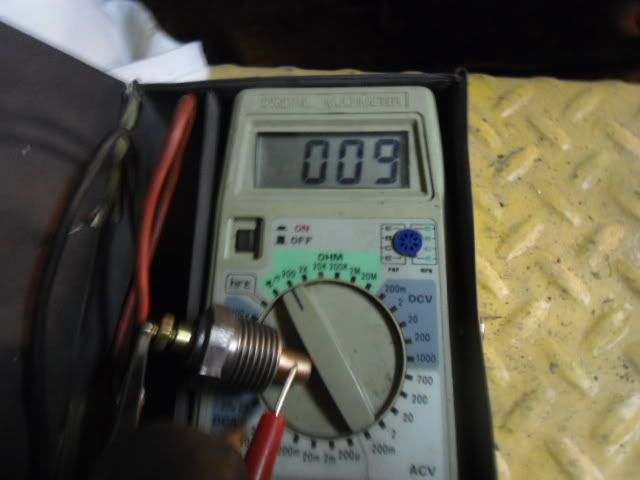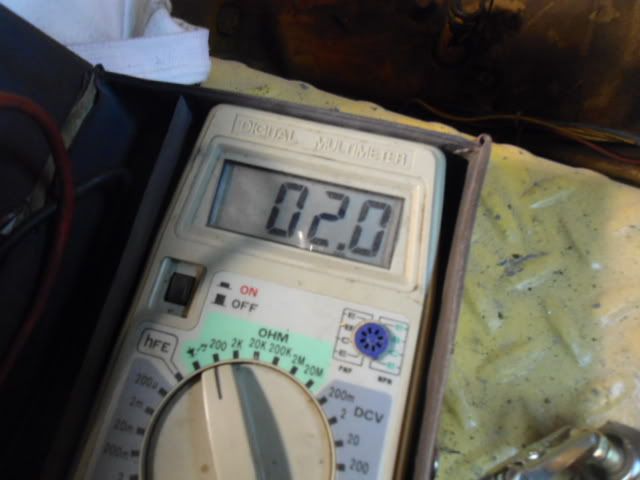Hello !
I've search the forum ( the right way hopefully)
I've been thru the parts catalog as well as the repair manual and I can't find
what is the tempature range of the running diesel ( is it between 100 to 160 or form 140 to 240 )
found the normal range of oil pressure:
serial -22836 = 30 to 40 psi
serial 22837 -= 45 to 65 psi
so if I undertand properly then my dozer ( serial 08883T) would be under the range of 30 to 40 psi .
no gauges are working and it pi... me off !!
I try to fix all the gauges ( TEMP/ OIL PRESSURE / AMMETER )
so far from what I found would be that the temp sender is short ( been removed and test with voltmeter in DIODE test mode )
so I will try to test the gauge itself but I'm not sure how .
I want to put 12v direct from battery to gauge + & - on each terminal to find out if the needle is moving properly .
any tricks an help welcome
temp / pressure working range
-
andregrondin
- 440 crawler

- Posts: 215
- Joined: Mon Apr 18, 2011 6:51 am
- Location: Granby,Québec, Canada
temp / pressure working range
Dig in boy !!
J-D 350 straight 1966
model # = T4F3D
serial # = 08883T
J-D 690-B 1980
model # = D690B
serial # = 007364T
Mack RB688S 1990 dumper
J-D 350 straight 1966
model # = T4F3D
serial # = 08883T
J-D 690-B 1980
model # = D690B
serial # = 007364T
Mack RB688S 1990 dumper
- 440 iron popper
- 1010 crawler

- Posts: 273
- Joined: Sun Sep 26, 2010 7:48 pm
- Location: Québec, Canada
Hi André,
Operating temperature of an old diesel engine is between 160 F to 185 F.
For the temperature gauge problem. There are 2 types I know on old machines. In both cases the sender is a variable resistor.
1. 3 wires gauge with +, Signal, -. You put 12V on + and a potentiometer between signal and - wich is also grounded. If you change the resistor value (turning the pot) the needle will move accordingly.
2. 2 wires gauge with + and -. You put 12V on +. Then a potentiometer on - and the other side of it to the ground. Again when turning the pot, the needle will follow. In this setup, if you put 12V directly to the + et - terminals, the needle will go Overheat!
You can get replacement with Stewart warner I guess. You might also consider changing to a mechanical gauge that is not very expensive.
I hope that helps.
Operating temperature of an old diesel engine is between 160 F to 185 F.
For the temperature gauge problem. There are 2 types I know on old machines. In both cases the sender is a variable resistor.
1. 3 wires gauge with +, Signal, -. You put 12V on + and a potentiometer between signal and - wich is also grounded. If you change the resistor value (turning the pot) the needle will move accordingly.
2. 2 wires gauge with + and -. You put 12V on +. Then a potentiometer on - and the other side of it to the ground. Again when turning the pot, the needle will follow. In this setup, if you put 12V directly to the + et - terminals, the needle will go Overheat!
You can get replacement with Stewart warner I guess. You might also consider changing to a mechanical gauge that is not very expensive.
I hope that helps.
440IC 1958 #443712, 602 blade, Gearmatic winch project in the back
440IC, serial tag gone, Blade with tilt
-------------------------------------------------------
440IC, serial tag gone, Blade with tilt
-------------------------------------------------------
-
andregrondin
- 440 crawler

- Posts: 215
- Joined: Mon Apr 18, 2011 6:51 am
- Location: Granby,Québec, Canada
Hi !
Ironpopper , thank you for the help ,
here is what I have done
1- remove the sensor from the motor ( scary moment cause it was
jammed ).
2- clean the sensor of paint and rust.
3- tested with voltmeter in DIODE mode ( means that when you touch
the leads together you hear BEEEEP , meaning ther is continuity) so it
means it is not OPEN which is good .

4- connect leads at both end of the sensor , put the volmeter in OHM
mode , reading zero OHM then heat up the sensor gently with a very
small butane torch and start seing OHM going slightly up meaning the
sensor is still good .


so far my diagnostic is that the sensor is good and performing well.
next step will be checking the gauge itself and also checking that ther is no short anywhere,
What I will do to check the gauge will be to connect it has it is suppose to be and heat-up the sensor with the torch .
I will post pics
Ironpopper , thank you for the help ,
here is what I have done
1- remove the sensor from the motor ( scary moment cause it was
jammed ).
2- clean the sensor of paint and rust.
3- tested with voltmeter in DIODE mode ( means that when you touch
the leads together you hear BEEEEP , meaning ther is continuity) so it
means it is not OPEN which is good .

4- connect leads at both end of the sensor , put the volmeter in OHM
mode , reading zero OHM then heat up the sensor gently with a very
small butane torch and start seing OHM going slightly up meaning the
sensor is still good .


so far my diagnostic is that the sensor is good and performing well.
next step will be checking the gauge itself and also checking that ther is no short anywhere,
What I will do to check the gauge will be to connect it has it is suppose to be and heat-up the sensor with the torch .
I will post pics
Dig in boy !!
J-D 350 straight 1966
model # = T4F3D
serial # = 08883T
J-D 690-B 1980
model # = D690B
serial # = 007364T
Mack RB688S 1990 dumper
J-D 350 straight 1966
model # = T4F3D
serial # = 08883T
J-D 690-B 1980
model # = D690B
serial # = 007364T
Mack RB688S 1990 dumper
Who is online
Users browsing this forum: Google [Bot] and 365 guests